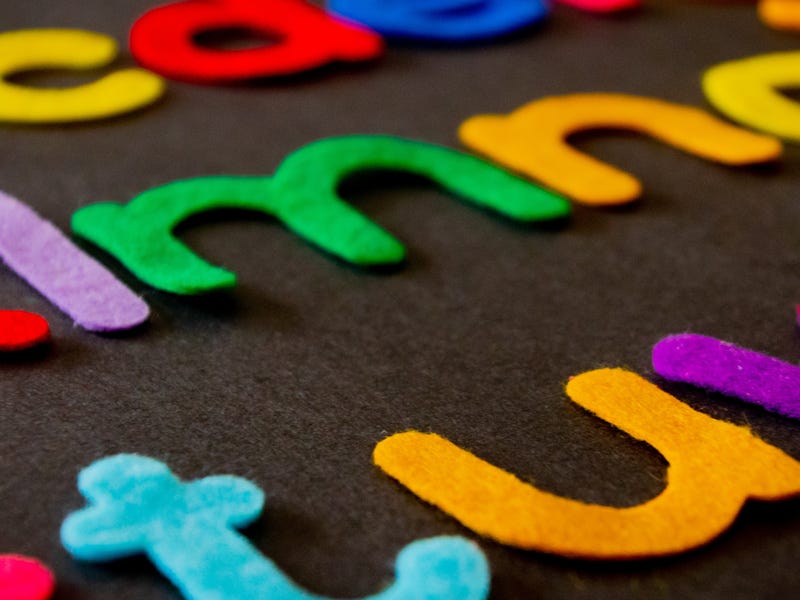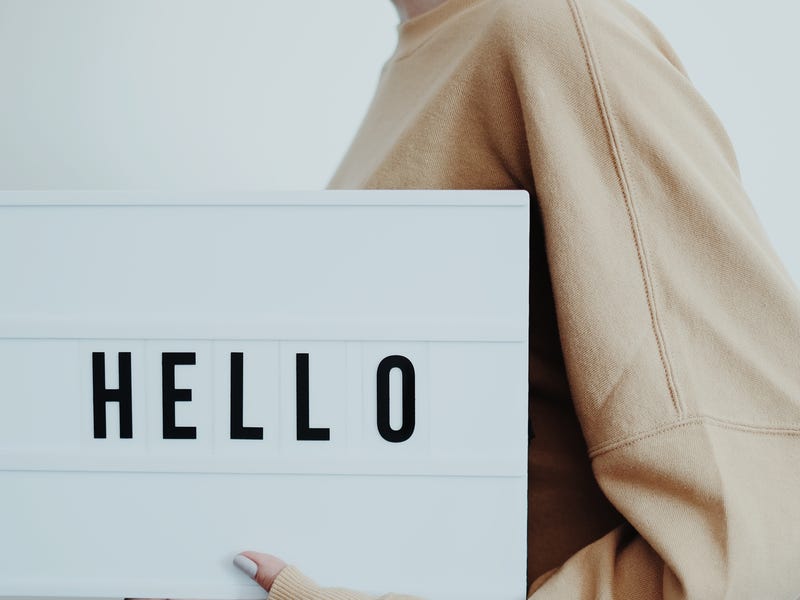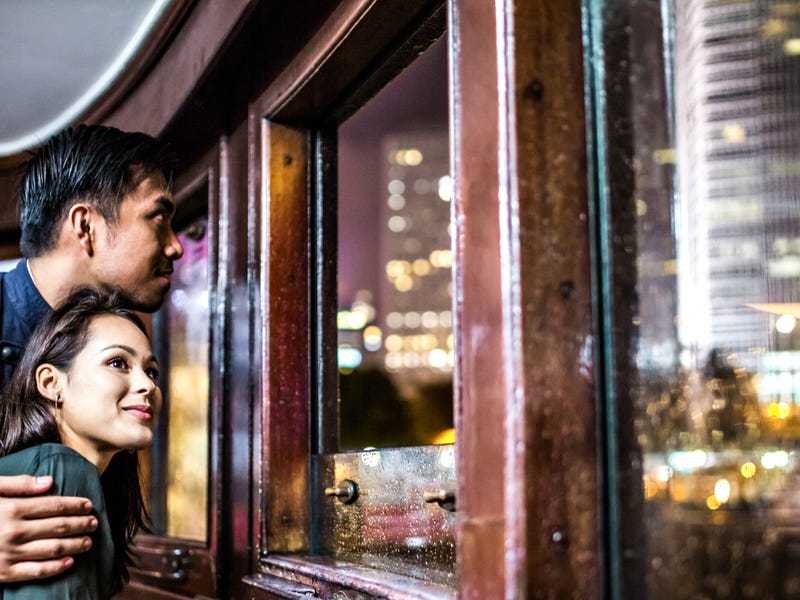
90 marvelous shades of color in English from mint green to mango
Author: Karolina Assi
Colors are one of the first and most enjoyable things we ever learn to say in a foreign language. And learning colors in English will help you get your message across more easily.
Once you learn the basic colors, you’ll be able to tell someone that you like their yellow t-shirt, indicate to your date that you want red roses, or tell the lady at the shoe store that you’d prefer this pair of shoes in black. Although you don’t need to know all the different colors and shades, the more you know, the more specific you can get when describing things.
In this guide, we will walk you through all colors of the rainbow and their range of shades. We will also share tips and fun games to learn colors faster. Ready? Let’s learn some colors!
Table of contents
- Why learn the colors in English?
- Colors in English
- Songs about colors in English
- English colors FAQs
- A few bonus hacks to learn English colors quickly
Why learn the colors in English?
Whether you’re learning English to have a basic conversation while you travel to an English-speaking country or for professional reasons, colors are something you won’t be able to do without. Here are a few reasons why:
Describe things
One of the main reasons why you should learn different shades of color in English is to be able to describe things. Whether while shopping for new clothes at a clothing store or describing the girl or guy we like to our best friend, we need colors to paint a vivid picture of whatever we’re describing.
Speak more fluently
Can you imagine not being able to describe what you see or the thing you want just because you don’t know how to name its color? It would be very uncomfortable! And it would make communicating much more difficult. Learning colors in English and their different shades will help you be more specific when describing things and communicate your message more efficiently.
Use fun idiomatic expressions
English uses a lot of fun idiomatic expressions with colors. Someone can be green with envy, see red, or be tickled pink. Do you know what these mean? If you know the colors, you might be able to figure it out!
This is because colors are closely tied to our emotions (there’s even such as thing as color psychology).
Colors in English
In English, there are a few words that describe the color of something. Of course, the most basic one is the word “color.”
- In American English, it’s spelled “color” and pronounced <kuh-lr>.
- In British English, it’s spelled “colour” and pronounced <kuh-luh>.
Apart from the word “color,” there’s also “hue” and “shade.” The hue can be described as an indication of the color. For example, you can have blue ocean water with a green hue. On the other hand, a shade is the tone of the color. For example, a blue ocean can have turquoise or aquamarine shade.
Let’s take a look at the main colors and their shades.
Shades of purple
Purple is one of the most important colors in English. If you want to describe the shade of beautiful flowers that bloom in spring or the color of some fruits, such as grapes or plum, you’ll need to learn the various shades of purple.
Purple is also a popular nail and hair color, so if you’re currently considering going purple, you can take inspiration from the below purple palette.

| Shade of purple | Pronunciation | HEX color code |
|---|---|---|
| Lavender | /lævəndə/ | #E39FF6 |
| Purple | /pɜːpl̩/ | #800080 |
| Violet | /vaɪələt/ | #710193 |
| Grape | /ɡreɪp/ | #6F2DA8 |
| Mauve | /məʊv/ | #FFD700 |
| Mulberry | /mʌlbri/ | #7FFF00 |
| Plum | /plʌm/ | #601A35 |
| Lilac | /laɪlək/ | #C812C8 |
| Indigo | /ɪndɪɡəʊ/ | #4B0082 |
Shades of orange
Orange is a vivid and bright color that brings joy to anyone’s life! If you want to describe the Caribbean sunset or the colors of various tropical fruits, such as mangos or papayas, you’ll need to know these shades of orange.

| Shade of orange | Pronunciation | HEX color code |
|---|---|---|
| Tangerine | /tændʒəriːn/ | #F28500 |
| Orange | /ɒrɪndʒ/ | #FFA500 |
| Amber | /æmbə/ | #FFBF00 |
| Bronze | /brɒnz/ | #B2560D |
| Burnt Orange | /bɜːntɒrɪndʒ/ | #CC5500 |
| Marmalade | /mɑːməleɪd/ | #D16002 |
| Mango | /mæŋɡəʊ/ | #FFBF34 |
| Rust | /rʌst/ | #AB0B23 |
| Papaya | /pəpaɪə/ | #E66A35 |
Shades of blue
Blue is one of those colors that we use on a daily basis. The shades of blue vary a lot. There are light blues such as sky blue, blues with a hint of green such as turquoise or teal, and dark blues, such as navy or midnight blue.

| Shade of blue | Pronunciation | HEX color code |
|---|---|---|
| Royal Blue | /rɔɪəl bluː/ | #281E5D |
| Blue | /bluː/ | #0000FF |
| Turquoise | /tɜːkwɔɪz/ | #30D5C8 |
| Teal | /tiːl/ | #008080 |
| Cyan | /saɪən/ | #00FFFF |
| Sky Blue | /skaɪ blu:/ | #63C5DA |
| Navy Blue | /neɪvi bluː/ | #000080 |
| Baby Blue | /beɪbi blu:/ | #89CFF0 |
| Midnight Blue | /mɪdnaɪt bluː/ | #191970 |
Shades of red
Red is a color of love, passion, and strong emotions. Just like blue, red has many different shades, ranging from dark reds, such as burgundy to bright reds, such as crimson or scarlet. If you like to wear lipstick, you’re probably already familiar with different shades of red.

| Shade of red | Pronunciation | HEX color code |
|---|---|---|
| Burgundy | /bɜːɡəndi/ | #800020 |
| Red | /red/ | #FF0000 |
| Cherry | /tʃeri/ | #990F02 |
| Crimson | /krɪmzn̩/ | #DC143C |
| Brick Red | /brɪk red/ | #CB4154 |
| Blood Red | /blʌd red/ | #710C04 |
| Maroon | /məruːn/ | #800000 |
| Berry | /beri/ | #AB0B23 |
| Scarlet | /skɑːlət/ | #FF2400 |
Shades of yellow
Yellow is an energetic colors that brings joy and happiness. It has many different shades, ranging from toned-down yellows, such as light yellow and cream, to move vivid ones, such as lemon or canary.

| Shade of yellow | Pronunciation | HEX color code |
|---|---|---|
| Lemon | /lemən/ | #EFFD5F |
| Yellow | /jeləʊ/ | #FFFF00 |
| Cream | /kriːm/ | #FFFDD0 |
| Canary | /kəneəri/ | #FF00FF |
| Chartreuse | /ʃɑːtrɜːz/ | #DFFF00 |
| Gold | /ɡəʊld/ | #FFD700 |
| Light Yellow | /laɪtjeləʊ/ | #FFFFA7 |
| Sand | /sænd/ | #D8B863 |
| Mustard | /mʌstəd/ | #E1AD01 |
Shades of brown
Brown is a versatile color and its shades are mainly named after coffee, nuts, and chocolate. So, if you’re a coffee or chocolate lover (or both!), you might already know the different shades of brown.

| Shade of brown | Pronunciation | HEX color code |
|---|---|---|
| Caramel | /kærəməl/ | #65350F |
| Brown | /braʊn/ | #964B00 |
| Sepia | /siːpɪə/ | #80613C |
| Chestnut | /tʃesnʌt/ | #3DED97 |
| Chocolate | /tʃɒklət/ | #4E403B |
| Almond | /ɑːmənd/ | #EED9C4 |
| Cedar | /siːdə/ | #4A3728 |
| Coffee | /kɒfi/ | #8A624A |
| Walnut | /wɔːlnʌt/ | #59392B |
Shades of pink
In psychology, pink is the color of hope. It’s a reassuring color that brings a sense of peace. Its shades range from orange-y ones, such as peach and coral to bright ones with purple and red hues, such as magenta or strawberry.
If you’re a makeup enthusiast, you may already be familiar with them!

| Shade of pink | Pronunciation | HEX color code |
|---|---|---|
| Peach | /piːtʃ/ | #FC9483 |
| Pink | /pɪŋk/ | #FFC0CB |
| Coral | /kɒrəl/ | #FE7D6A |
| Rouge | /ruːʒ/ | #F26B8A |
| Magenta | /mədʒentə/ | #FF00FF |
| Salmon | /sæmən/ | #FDAB9F |
| Blush | /blʌʃ/ | #FEC5E5 |
| Hot Pink | /hɒt pɪŋk/ | #FF69B4 |
| Strawberry | /strɔːbri/ | #FC4C4E |
Shades of green
Green is the color of nature. It’s everywhere. We see green trees when looking out of our window, we have green plants bring a breath of fresh air into the four walls of our home, and we dream about green palm trees while sitting in the office. Because of this versatility, green has many different shades. If you love the color green, you’ll very likely appreciate the shades of green color palette below.

| Shade of green | Pronunciation | HEX color code |
|---|---|---|
| Sage | /seɪdʒ/ | #728C69 |
| Green | /ɡriːn/ | #3CB043 |
| Jade | /dʒeɪd/ | #00A86B |
| Seafoam | /si:fəʊm/ | #3DED97 |
| Lime | /laɪm/ | #AEF359 |
| Forest | /fɒrɪst/ | #0B6623 |
| Olive | /ɒlɪv/ | #98BF64 |
| Emerald | /emərəld/ | #50C878 |
| Mint | /mɪnt/ | #99EDC3 |
Shades of black
Although we tend to consider black as a dramatic color, in psychology, as well as in branding, it’s considered to be the ultimate expression of luxury, elegance, mystery, and power.
Black also has many shades, although the differences between them are very subtle.

| Shade of black | Pronunciation | HEX color code |
|---|---|---|
| Ebony | /ebəni/ | #080402 |
| Black | /blæk/ | #000000 |
| Cool Black | /ku:lblæk/ | #151922 |
| Ink | /ɪŋk/ | #070504 |
| Obsidian | /əbsɪdɪən/ | #020403 |
| Jet Black | /dʒetblæk/ | #030303 |
| Charcoal | /tʃɑːkəʊl/ | #28231D |
| Onyx | /ɒnɪks/ | #030104 |
| Midnight | /mɪdnaɪt/ | #040406 |
Shades of white
Although white may seem boring, it’s a subtle, elegant color with many beautiful shades used in interior design, fashion, or graphic design. Knowing the different shades of white may be helpful when shopping for a new wardrobe, painting your house or choosing the drapes and bedsheets for your bedroom.

| Shade of white | Pronunciation | HEX color code |
|---|---|---|
| Beige | /beɪʒ/ | #F5F5DC |
| White | /waɪt/ | #FFFFFF |
| Ivory | /aɪvəri/ | #FFFFF0 |
| Eggshell | /eɡʃel/ | #F9FEFF |
| Coconut | /kəʊkənʌt/ | #F0EDE5 |
| Pearl | /pɜːl/ | #F8F6F0 |
| Bone | /bəʊn/ | #F9F6EE |
| Alabaster | /æləbɑːstə/ | #F8F3ED |
| Off white | /ɒfwaɪt/ | #FAF9F6 |
Songs about colors in English
Songs are a fun way to learn vocabulary in English without much effort. Singing songs can help you memorize new words more easily.
So, here are a few songs to help you learn colors in English. These are just three examples, but you can find many more on YouTube!
Rainbow Colors Song by The Singing Walrus
Most songs about colors in English are made for kids. However, songs for kids are often very catchy and easy to sing, which makes them very efficient tools for English learners!
Colors of the Rainbow by Jack Hartmann
This is another song about colors. Although it’s made for kids, it’s also a great one for adult English learners, as it walks you through all the colors of the rainbow with a catchy tune!
What a Wonderful World by Louis Armstrong
If you’re not into children's songs and you’d like something for adults, this beautiful song by Louis Armstrong is a perfect choice to learn the colors of our wonderful world.
English colors FAQs
What are the colors of the rainbow?
Red, orange, yellow, green, blue, indigo, and violet are the colors of the rainbow. The first letter of each of these colors spells ROYGBIV, an acronym commonly used to remember the colors of the rainbow. Red is found at one end of the visible light spectrum, while violet is at the other end. The other colors are found in between.
Which spelling is correct: color or colour?
Both ways are correct. “Color” is the American and Canadian spelling, and “colour” is the British and Australian spelling.
The correct spelling depends on whether you’re writing in American, Canadian, British, or Australian English.
What colors do dogs see?
Dogs see colors differently than humans. While humans can perceive a broad spectrum of colors, dogs can only see shades of grey, brown, yellow, and blue due to the structure of their eyes.
A few bonus hacks to learn English colors quickly
Although it’s fun, learning different colors in English and their shades can be pretty overwhelming. Here are a few tips you can implement to make this process easier.
Picture things in different colors
Learning colors will be easier if you can associate them with tangible things. To do that, pick a color and imagine different things of that color in your head. For example, if you chose blue, imagine something blue in your mind.
Now say it out loud or write it down. Try to make as many sentences as you can. For example, “I like the blue sky,” “He has blue eyes,” or “Her dress is blue.” This will help you remember the color and use it in different sentences.
Use flashcards
Flashcards are cards with words on them, usually one word on each side of the card. They are very useful for learning English words because you can test yourself with them.
You can buy flashcards or make your own by cutting up pieces of paper into cards. Write down the color on one side and paint the other side of the card in that color.
Play games with colors
There are many fun games that can help you practice your color vocabulary skills. For example, you can play “I Spy” with your friends during a party. In this game, you describe an object and have them guess what it is based on its color (e.g., “I spy something blue!”).
You can also hide small things around your home or yard and have your friends find objects of a specific color. You can even create a point system and fun prizes for the winners!
Ready to make your English more colorful?
Learning the names of colors in English and their shades takes time and effort. However, it is not as tricky as you might think, and can be a lot of fun, so embrace it. With the right methods, all it takes is a few minutes to learn the names for most of the colors; after that, you can easily remember them all.
We hope that this guide has helped you get familiar with different colors in English and their shades. And we believe that the vocabulary covered in this guide will help you make your English sound more colorful!
If you loved this article and would like to learn more useful English vocabulary, check our English blog or get in touch with us via the form below to see how we can help you reach your language goals.


